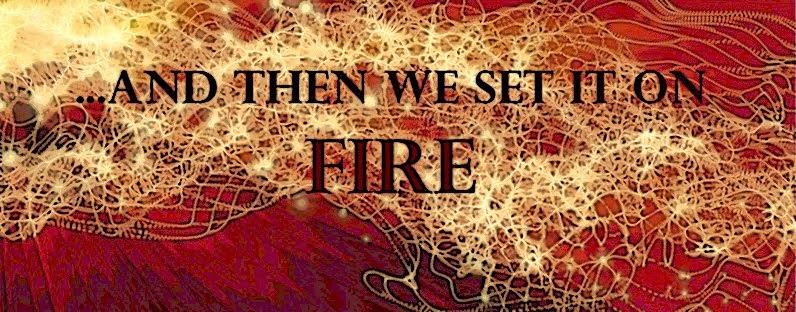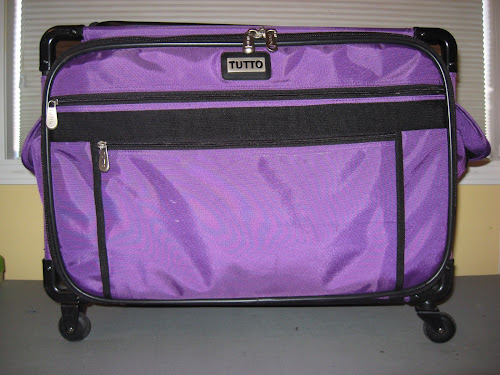This month, I feel honored to introduce an essay by Jane Dunnewold.

Jane Dunnewold is the author of Complex Cloth (1996) Improvisational Screen Printing (2003), and co-authored Finding Your Own Visual Language (2007). Interweave Press published Art Cloth: A Guide to Surface Design on Fabric in 2010. Dunnewold is the former chair of the Surface Design Studio at the Southwest School of Art. She teaches and lectures internationally, including recent tours to Australia, Italy and the United Kingdom. Dunnewold’s work was featured in the one-person exhibitions Sacred Planet (2009/2011) and Etudes: A Daily Practice (2011). She was awarded the Quilt Japan Prize in the 2002 Visions exhibition, and the Gold Prize, at the Taegue International Textile Exhibition. Currently the President of the international Surface Design Association, she maintains Art Cloth Studios, in San Antonio, Texas, USA. Additional information on commissions and exhibition experience can be found at complexcloth.com. Essays on the creative process and acts of making are offered regularly at existentialneighborhood.blogspot.com.
Choose the Right Tool for the Job
When Zenna was ten, her five year old half-sister Charlotte spent
Saturdays with us. As the ex-wife, I was determined to befriend Charlotte’s
mother because I knew what she was up against. And neither of us wanted the
girls to miss out on the joys of sisterhood.
It was the spring of Zenna’s first softball team. Even at ten she
hated not being in control of everything, and hated striking out even more; she
needed to learn to be a team player. She got out of the car grudgingly;
dreading the two hour practice. Charlotte blew kisses from the back seat. We
were off to run errands while Zenna played ball.
Less than two miles from the playing field, on a wooded stretch
of uphill road, the car ran out of gas. In those days I was distracted more
often than not, and this wasn’t the first time I’d neglected to check the fuel
gauge. One time we ran out of gas on forlorn Interstate 35 in the middle of
Kansas, and Zenna’s father had to hitchhike seven miles to find a gas station,
but that’s another story.
This time the car coasted to a stop. Cell phones had barely been
invented, and were still the size of a shoebox, and I couldn’t afford one. So I
unstrapped Charlotte’s seatbelt and we sat down on the curb while I figured out
what to do.
Heavy into guilt and thinking, I didn’t notice Charlotte poking
around in the bushes near the sidewalk until she exclaimed “Hey, look at this!”
She lifted a moldy flour tortilla out of the bushes, and held it up for
examination.
“Agghh!” Was I screeching? “Put that down! It’s dirty!” Charlotte dropped
the tortilla like a hot potato. “It’s germy,” I said. “Don’t touch stuff like
that!”
I watched as she opened the car door and retrieved her small
backpack. With great deliberation she unzipped the zipper and reached inside.
She pulled out a pair of green rubber gloves, proceeded to put them on, and
then picked up the tortilla defiantly. I burst out laughing. “Why have you got
those gloves?” I asked.
“Harriet the Spy has
gloves.” Charlotte said matter of factly. “She is always prepared.” She tossed the tortilla back into the bushes.
Within minutes we were rescued by a nice man in a big truck. He
called AAA from his cell phone and gas was on the way.
Zenna switched to basketball the following year, grew to be over
six feet tall, and got good at it. I started remembering to keep an eye on the
gas gauge.
This story sticks in my head because it so perfectly demonstrates
the importance of having the right tool for the job. You can’t paint a house
with a two inch brush - well, maybe you can, but it will become the job of a
lifetime. A Wilton sprayer sure works faster. You need the right knife to cut
stencils, the right flat brush to paint backgrounds on canvas, the right needle
to stitch precise patterns on cloth.
So that’s the first thing to remember. Inventory your tools. Make sure you
have what you need and aren’t settling - because settling won’t do your
efforts justice. Honor your work enough to own exactly the right needle for
special thread. Buy the perfect brush for painting spidery
India ink lines
if you don't already have it.
The second thing to remember, which is a
harder sell because many of us don’t want to work hard at making art, is
that getting good at anything takes time and practice. We may just want it
to happen, but that isn't usually how it goes. We call it playtime, but in a
way, characterizing it as play time doesn't do our efforts justice.
There is most certainly an aspect of playing to making art. It’s
a way to get started, and that can’t be underestimated. Fooling around in the
studio whets your appetite for working, and encourages fresh ideas to bubble
up. But it can go the other way, too. Frequently it works out better if the
playing happens after the planning. If you don’t put any effort into planning
tools or colors or composition, and you just expect it to work out, you’ll be
rewarded some of the time, because the odds are good that at least part of the
time you’ll luck out. But the odds of
whether you’re satisfied with what you make increase - if you spend time
preparing to work prior to actually working.
It’s one of the paradoxes. Pull together the tools you might need
before you start printing. Think about the designs you want to make, the colors
you plan to use, the scale of the piece you envision. If you’ve got all the
individual parts ready to go, then the whole
can happen without distraction. Need a tool? You’ve got it. No stopping to go
find it or order it on-line. Need just that right red? Bingo. Plenty of paint
and the knowledge to mix it.
Effort that sounded tedious transforms into playtime.
Undistracted playtime. Just don’t forget your rubber gloves.
Thank you Jane! Tomorrow, Jane will tell us what some of her favorite tools are. Then, throughout the month, we (the resident artists) will tell you what OUR favorite tools are. Stay tuned!
 I have been very quiet this month, I know. I have been reading the other posts and nodding to myself, yes, yes, I use that. And yes, those are some of my favorite tools. But I didn't want to just rehash the other posts. My favorite thing is putting color on fabric -- I use paints, dyes, inks, and thread. So I decided that my favorite tool is my stash -- not just the fabric, but all the stuff I use to make it colorful. I am not particularly keen on sharing my personal space with the cyber-world; however, I am going to show a tiny bit of my solutions for storage of said stash.
I have been very quiet this month, I know. I have been reading the other posts and nodding to myself, yes, yes, I use that. And yes, those are some of my favorite tools. But I didn't want to just rehash the other posts. My favorite thing is putting color on fabric -- I use paints, dyes, inks, and thread. So I decided that my favorite tool is my stash -- not just the fabric, but all the stuff I use to make it colorful. I am not particularly keen on sharing my personal space with the cyber-world; however, I am going to show a tiny bit of my solutions for storage of said stash.











































